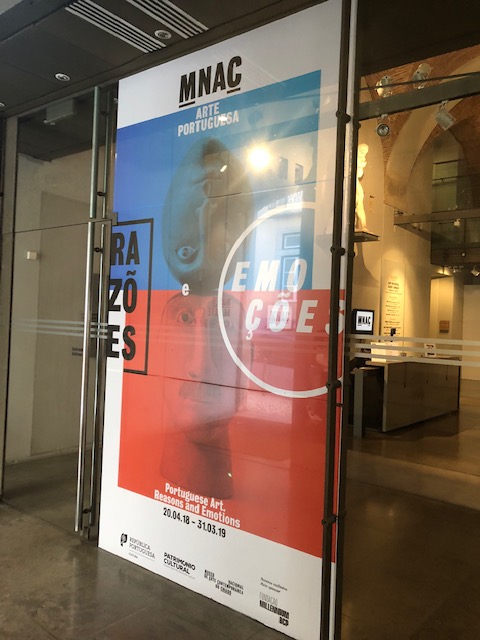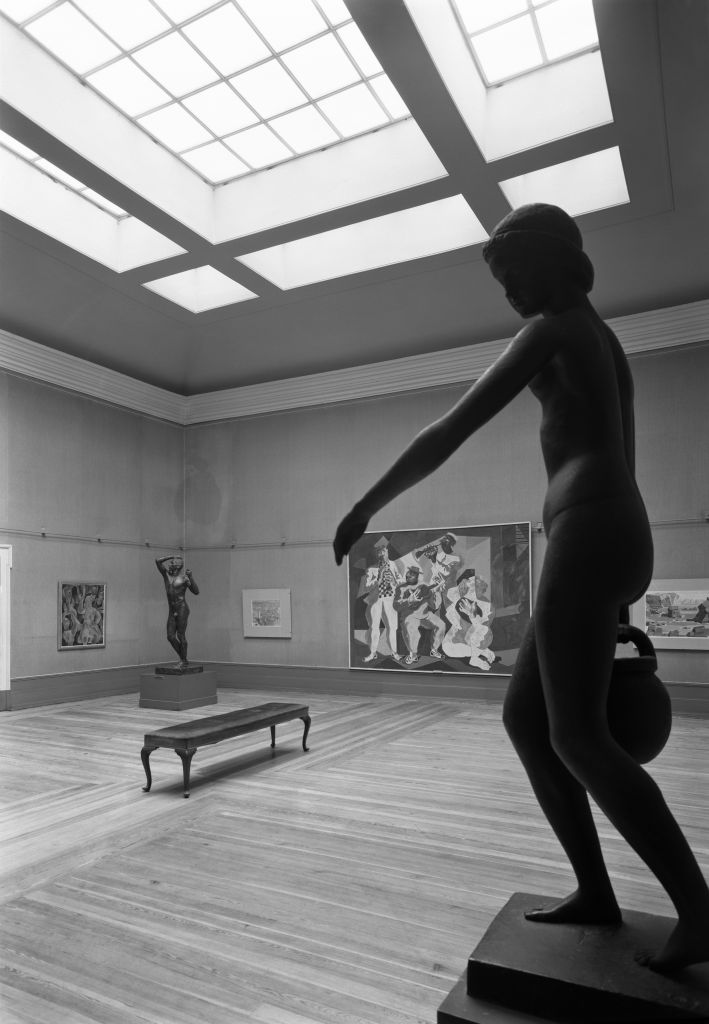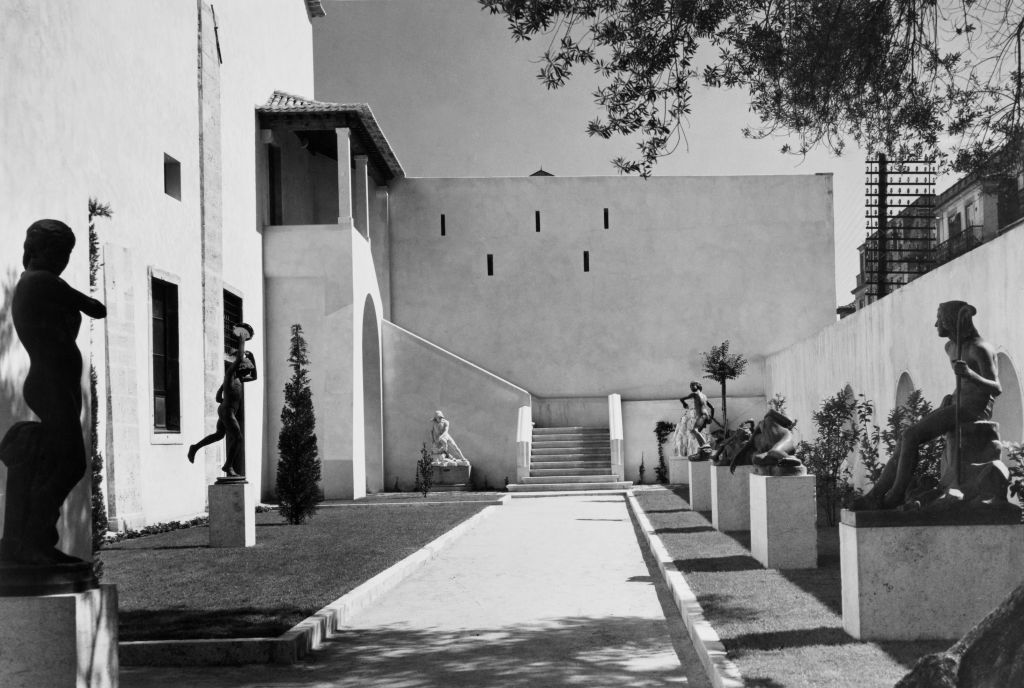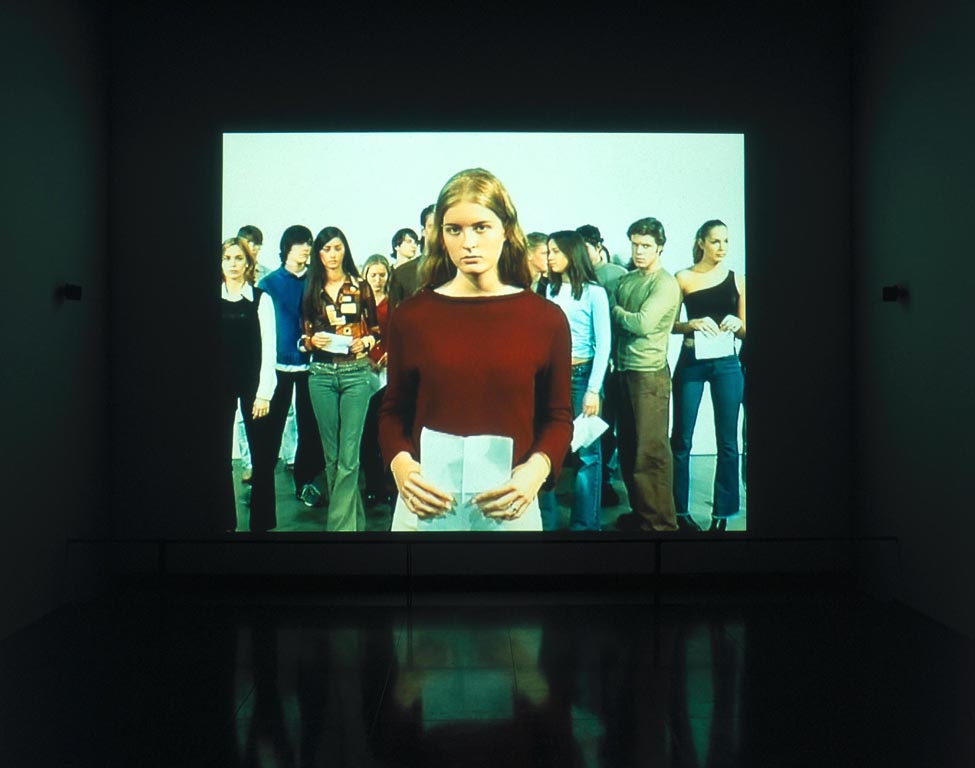
History
Mission

With an exhibition program in close relationship with the Educational Service program, the museum aims to reach different audiences of different age groups and different levels of artistic literacy.
We offer, in addition to the exhibitions, a wide program of meetings (with collectors, artists, art historians, scientists and other researchers from various fields of knowledge), in order to broaden the range of offerings and, consequently, the public. With a comprehensive and dynamic catalog publishing policy, particularly in the most prominent exhibitions concerning the research of the most relevant artists in the history of contemporary art, we also contribute to the dissemination of research and the enhancement of our artistic heritage.
To this end, we also seek to expand partnerships, not only with publishers, universities, and national and foreign museums, but also with potential sponsors that help us deepen and broaden our research and dissemination actions.
MNAC, installed in Chiado, and now also disseminated through the Google Art Project platform, is a privileged showcase of Portuguese culture and art, attracting a growing number of national and foreign visitors and constituting a pole of cultural and artistic attractiveness. and reinforcing the interest of more demanding tourism.
Thus, our mission can be summarized in the following points:
1. Investigate and exhibit the collection, revealing more aspects of artistic creation, from 1850 to the present, namely through the study and dissemination of less worked artists (although not neglecting the best known), challenging historical prejudices;
2. enhance the knowledge of the contexts of creation, expanding the relationship between art, history, thought, science and daily life, through exhibitions, lectures, courses, conferences and publications;
3. create conditions for dialogue between the MNAC collection and other national or international public or private collections, contributing to the deepening of the knowledge of Art and, therefore, contributing to the national artistic panorama and to the internationalization of Portuguese art in the temporal spectrum of the museum and in the various areas of artistic expression.
In short, we work to make the museum a space of knowledge and reflection of our nineteenth and nineteenth century artistic past, but also of critical acceptance of contemporary artistic proposals, thus fully assuming its collection and the mission with which the Republic constituted it, as National Museum of Contemporary Art.
Introduction

The National Museum of Contemporary Art - Museu do Chiado was established by government decree on 26th May 1911. It was born out of the division of the old Museu Nacional de Belas-Artes into the Museu Nacional de Arte Antiga, which inherited from the former all the works produced prior to 1850 and remained in the Palácio das Janelas Verdes, and the National Museum of Contemporary Art, which included all the works completed after that date and was housed in the Convento de S. Francisco, in an area neighbouring the Academia de Belas Artes. The creation of a network of museums, which spread the length of the country, was the fulfilment of a project based on the 18th century concept of human enlightenment, endowing the country with the necessary tools to safeguard and display the nation’s art. The creation of a museum of contemporary art was, in the international context, new and unprecedented.
The housing, though only on a temporary basis, of the National Museum of Contemporary Art in the Convento de S. Francisco located it symbolically and opportunely in the area frequented by the artists of the periods represented in the museum. It occupied the large old halls, convent annexes, where the exhibitions of the Romantics and the naturalists had been held.
1911

1945

It was the sculptor Diogo Macedo who, as director, after extensive remodelling of the structure and interior, opened the museum daily to the public in 1945, with its own entrance in Rua Serpa Pinto. Having been involved in the modernist movement and then later an art historian, his appointment was expected to usher in a new era at the museum. A programme of temporary exhibitions was implemented, as well as research on artists represented in the collection in the form of short monographs published by the museum. However, no clear definition of a modernist stance was forthcoming, and the pernicious commitment to late-naturalism decontextualised from its time was continued. Some works by artists that emerged in the latter half of the 1940s were acquired, though in an unclear and unplanned fashion.
Thus, up until 1959, the museum was outdated and conservative and had little in common with other museums across Europe. The political appointment of the painter Eduardo Malta in that same year, despite general protests by the art community and critics, nevertheless placed further emphasis on a backward-looking approach that had catastrophic consequences for the collection’s modernist position and its respective and necessary adjustment to the international art scene. A catalogue was produced, but the nazi principles on which the collection’s presentation lay was heavily condemned by the leaders of the very regime that had appointed the director in the first place. In 1970, Maria de Lourdes Bártholo, a conservative by training, was appointed director of the museum, which was in an advanced state of disrepair. Over the following 17 years, the building only underwent some very superficial restoration work. The collection extended up to the contemporary era, but the criteria governing representation of the diverse movements, trends and leading figures in Portuguese art, which from the preceding decade onwards had undergone profound quantitative and qualitative transformations, were not in the least equated and neither did the museum’s acquisitions define a consistent and broad understanding of contemporaneity.
1994

With the Chiado fire in August 1988, and even though the museum escaped unscathed, the works of art were removed as a precautionary measure. It was decided by the then secretary of State for Culture, Teresa Gouveia, that the collection’s home should be rethought. The French government put forward a project to renovate the museum by the architect Jean-Michel Wilmotte, who, with a team led by the art historian Raquel Henriques da Silva, redefined the museum in the form it has exhibited since its re-inauguration on 12th July 1994.
The project sought to integrate the building’s existing historically important spaces into a neo-modern architectural language, enhancing the autonomy of the planes that constitute the suspended walkways, the floor itself and the ceilings and the sudden walls that define great vertical extensions. With an original and economic range of materials and colours, its discreet austerity establishes a full dialogue with the building’s functions.
When the museum reopened, a catalogue entitled Museu do Chiado, Arte Portuguesa 1850-1950, produced by Pedro Lapa, Raquel Henriques da Silva and Maria de Aires Silveira, presented the most consistent and coherent nuclei of its extensive collection, over two thousand items, with individual studies on each work, as well as respective bibliographies and historical backgrounds. Given the collection’s failings with regard to its representation of art from the latter half of the twentieth century, the museum’s acquisitions policy focused on the seminal works of the movements of that period. A systematic programme of temporary exhibitions on Portuguese artists that had emerged during the least well represented decades in the collection was put into place, alongside a strong emphasis on the studies and research presented in the respective catalogues. A programme of contemporary art aimed at emerging artists, whose work was based on interpretations of the museum’s collection, was set up and allowed the acquisition of varied works that initiated an updating of the collection’s body of contemporary art. Since the reopening, the museum’s lack of space, both for the collection and the temporary exhibitions, has become notorious.
1998

At the end of 1998, Pedro Lapa, a member of the museum’s reorganisational team, became director. The programme of temporary exhibitions took on greater importance and the focus moved to four specific areas, directly or indirectly related to the chronological scope of the collection. Thus was begun a series of retrospective exhibitions on 19th century Portuguese artists. Continued were the museum’s large retrospectives on Portuguese modernist movements and artists, with the first catalogue raisoneé on a Portuguese artist, Joaquim Rodrigo. In parallel, large exhibitions on the artists and movements at the historical forefront were co-produced with other prestigious international museums. The Interferências (1998-2002) programme ran parallel to the above exhibitions and presented work specifically produced for it by contemporary Portuguese and international artists. Another aspect to which this programme gave particular importance was the format of the publications that accompanied the exhibitions and that presented in-depth scientific and essayistic analysis.
The acquisitions policy has been developed along two lines in order to mitigate the shortcomings referred to in the collection, and the 1950s and 1960s, as well as the 1990s, are now already significantly well represented. A start was also made at incorporating other artistic genres into the collection, such as photography and video, media which are heavily exploited in contemporary art. Several of the museum’s custodians more actively involved in giving the Museu do Chiado – National Museum of Contemporary Art the resources its title would suggest have greatly contributed to this process.
The lack of space has been one of the factors that has most hampered the implementation of the wide range of activities that the museum has sought to develop. The chance to exhibit its collections in a continuous manner, or to develop temporary exhibitions of the scale desired, or even develop pedagogic activities, all these aspects of a museum’s activity are subject to limitations for which a solution is long overdue.
2015
In 2015, under the direction of David Santos (December 2013 to July 2015), the offering to the museum of buildings until then under the purview of the Public Security Police and the Civil Government of Lisbon allowed the expansion of the MNAC exhibition area, creating the Capelo Wing.
In the same year, the sponsorship partnership between the museum and Sonae led to the creation of an innovative program around works of media art, expressed in three editions of the biennial Sonae Media Art Award, two editions of the Sonae/MNAC Art Cycles artistic residency, in addition to a video art program.
In July 2015, David Santos resigned, being temporarily replaced by Samuel Rego who took over the direction until December of that year, when Aida Rechena won the competition for the direction.
2017
In December 2017, Emília Ferreira was appointed director, on a replacement basis, a situation that remained until March 2022, when her official appointment was published, after winning the international tender procedure.
Under the direction of Emília Ferreira, the MNAC has maintained the policy of retrospective and monographic exhibitions on Portuguese 19th century and modernist artists, fostering partnerships with national and international museums.
The collection continues to be updated, mainly through donations and bequests from artists and collectors.
Simultaneously with a program of exhibitions by contemporary artists, with projects specifically created for the MNAC, a pedagogical program of courses, lectures, workshops and seminars continues.
MNAC has also expanded its editorial policy, through partnerships with publishers and the Academy, namely with the Faculty of Fine Arts of the University of Lisbon. With FBAUL, a program of International Congresses on contemporary Portuguese artists represented in the MNAC collection was also implemented.
Partnerships have been one of the focal aspects of this direction. Since 2018, the European Year of Cultural Heritage, the MNAC has been developing the pro bono collaborative network [Portugal among Heritages]. Sustainable cultural tourism network, with more than 70 partners across the country, combining high culture and popular culture, and promoting, in the national territory, the sharing of artistic and intellectual resources, through lectures, debates, exhibitions , seminars and courses. Its corpus of own publications can be consulted on the project website [Portugal entre Patrimonios]: http://www.portugalentrepatrimonios.gov.pt.
The Tripartite Agreement, signed in 2019, between MNAC, FBAUL and Fundação Millennium bcp is one of the examples of the desire to work in a network. Likewise, the protocol with the Instituto de História da Arte, Faculdade de Ciências Sociais e Humanas, Universidade Nova de Lisboa, MNAC and Fundação Millennium bcp, has allowed the study of artists represented in the collections of the museum and Millennium bcp. , through a research grant granted to a researcher from the IHA/FCSH/NOVA, through a competition, by the Millennium bcp Foundation, culminating in a monographic exhibition at the MNAC and the publication of a monographic study in an editorial partnership between the museum and Tinta da China Publishers.
2020 & 2021
Online programming during the two confinementsDue to the closure caused by the pandemic, close contact with our audiences was suspended, as were the projects being developed at the time and that gave substance to the planned programming.In 2020, through the MNAC Facebook page, the museum started programming the “Diary of small things” (allusion to the exhibition about Sarah Affonso, “The days of small things”, on display at MNAC between September 2019 and March 2020). ). This digital programming presented, over 75 days, dozens of publications, organized according to previously defined objectives and in order to arouse the interest of the most varied audiences.In “History of a Collection” we presented the MNAC Collection; “Stories from the History of a Collection” made known facts and episodes less known to the general public, around a work; “Glossary” informed about the meanings of artistic terminology; “Other ways of seeing” presented different perspectives of the collection under the prism of visuality (collection and photography exhibitions, short videos about the Museum's activity over the years); “INSPIRAÇÃO MNAC” was a set of short films around what inspires us, and “SOMOS MNAC”, a series of 6 short films presenting the Museum Team, and the functions of each of its elements.In 2021, in the second confinement, the “Diary of Daily Dilemmas”, this time inspired by the collective exhibition DILEMA DE SER E PARECER. THE PORTRAIT IN PAINTING, PHOTOGRAPHY AND SCULPTURE (1850-1916), the MNAC presented 11 sections in a online program, through the Facebook page and the YouTube channel, which was extended for 90 days.In addition to a section on some of the works featured in the exhibition, we also had “Histórias do Bairro”, in which memories of Chiado stand out; we continued the “Glossary of Art” and the “Readings of works” and also the more personalized reading section “What this work tells me”. At the weekend, a special program “O Fungagá das Artes” (APOM Award 2022), for kids and adults, presented two drawing courses, quizzes and puzzles. The drawing courses, guided by Nelson Ferreira and António Faria, were made possible thanks to the patronage of the Millennium bcp Foundation. Due to the huge audience success, they migrated from Facebook to Youtube, where they can still be seen.Throughout the 2021 confinement, MNAC also held a cycle of online academic conversations, around Portrait, w ith national and international guests. Films, interviews and 177 testimonies of artists were also shared through the museum's Facebook page, all available on the MNAC's Youtube channel.
2020
Celebrating the 110th anniversary of the MNAC, an artistic intervention was carried out on the façade of Rua Capelo, a project for which the MNAC invited the artist Pires Vieira, and which was only possible thanks to the patronage of civil society. Thus, we had a lot of support, including significant patrons and partners, without whom this financially demanding action could never have come to fruition. In addition to the museum's main patron, the Millennium bcp Foundation, MNAC also had the patronage of Vanguard Properties, CIN and, individually, Maria da Graça Carmona e Costa; the support of SPAL and Ramos Pinto; and, as partners, the Público newspaper, the publishing house A Bela e o Monstro, the historic café A Brasileira do Chiado and the Fuel agency. Also in 2020, we opened the gallery [Portugal entre Patrimónios], in the lobby of the Rua Serpa Pinto building. Associated with the project of the same name, this gallery has shared works by artists and collaborative programs from our partners, bringing new audiences to the museum.
2021
In 2019, the Millennium bcp Foundation became MNAC's biggest patron, having financed the architectural project and the rehabilitation of a space inherited from the PSP and which was in a state of disrepair. In this space, since 2021, the Millennium bcp Gallery has been operating at MNAC. This gallery, whose programming is the responsibility of the museum, is entirely financed by the patron, presents itself as a laboratory space, hosting a curatorial activity that is intended to be innovative, both in theoretical and artistic assumptions, and in the media presented. The importance of culture to the economy On October 25, 2021, we held a meeting on the theme “The importance of Culture for the Economy”. Organized by a challenge from the MNAC to the State of the Art company, it had Jornal de Negócios and Canal Cultura as media partners and with the participation of guests António Monteiro, Chairman of the Board of Directors of Fundação Millennium bcp; Álvaro Beleza, Coordinator President of SEDES; Luís León, Co-founder ILYA; João Cortez de Lobão, Co-President of the Gaudium Magnum Foundation – Maria and João Cortez de Lobão; Steven Braekeveldt, CEO of Ageas Continental Europe and CEO of the Ageas Portugal Group; and with Sofia Tenreiro, Founder of SBC Venture Capital.
Today
Currently, the MNAC's collection, which is constantly being updated, includes a significant and qualified collection of works of art, representing the complexity and diversity of artistic movements and practices from modernity to the present day, honoring the assumptions present in its foundation and dynamically maintaining itself committed to the present and the future.








